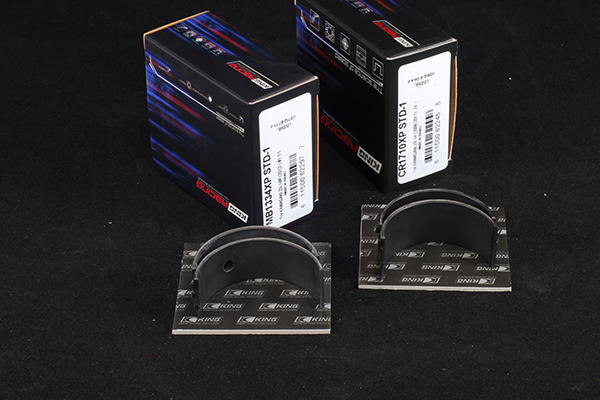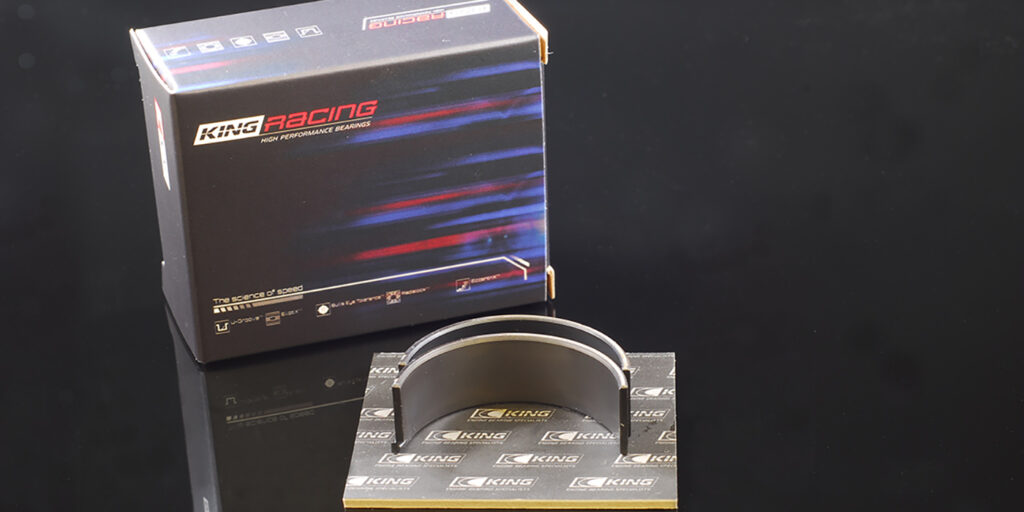You may or may not be wondering about the differences between automotive engine bearings and those used in a motorcycle application. For those who are curious, the most obvious difference is the size – motorcycle bearings are smaller. However, there are several key differences, so we spoke with King Engine Bearings to get the info and an update on their new line of race bearings for powersports applications.
Since motorcycle bearings are smaller than automotive, the oil clearance is smaller too. In order to achieve optimal conditions of hydrodynamic lubrication, the absolute tolerance of the oil clearance should be tighter than that of bigger automotive bearings. The bearing dimension responsible for the value of oil clearance is the wall thickness. The wall thickness of the motorcycle bearings should be a tighter tolerance.

These differences continue when comparing motorcycle bearings amongst one another in terms of those used for a regular, street application versus those used in racing applications. King Engine Bearings recently launched a line of bearings specifically for powersports racing applications such as Suzuki’s Hayabusa and GSX-R100, Kawasaki’s ZX14/R, and Polaris, so we asked them about the bearing characteristics.
King has historically been automotive focused, but says it decided to create a bearing for motorcycle applications due to demand from end users and engine builders, who were both looking for a better solution than stock bearings for racing applications. After extensive market research and investigating common failures of stock bearings, King decided to answer the market’s call and created a new powersports designated category in race bearings. The manufacturer also used this opportunity to further expand its engine bearing product range.
King’s race bearings for motorcycles are a tri-metal XP pMaxBlack design. Due to higher rotation speed and higher loads, the motorcycle bearings should have more precise dimensions (tighter tolerance of the wall thickness) and greater load capacity of the bearing material. While stock motorcycle bearings can reach up to 6,500 psi, King’s motorcycle bearings can reach up to 11,000 psi, which is almost double the load capacity.

When comparing bearing characteristics in a drag race motorcycle to a drag race car, King says the upper bearing shell wears slightly more than the cap side lower bearing due to the combustion loading on the power stroke. The conditions of bearing operation in drag racing are different from those in common races. Hydrodynamic lubrication is not possible due to the extreme load acting on the bearings. The bearing material continuously contacts the shaft surface. Such conditions are normal for both motorcycle and automotive drag races. When it comes to bearing life, King says its motorcycle bearings can last double or even triple the amount of time bearings might last in an automotive application. This is in part due to the intermediate layer of pMaxBlack, which is stronger than that of conventional high-performance bearings due to a combination of cold work and an increase of tin content from 2 or 3% to 4.5%. The hardness of the intermediate layer has been increased from 94 to 112 HV.
The pMaxBlack overlay has higher fatigue strength due to its lower thickness and higher copper content (increased from 2 or 3% to 5%). Its hardness is 18.3 HV. This is a significant increase compared to conventional high-performance overlays with hardness of 10.3-14.2 HV. Fatigue resistance of the pMaxBlack overlay has been additionally increased by a proprietary surface hardening technique developed by King Engine Bearings. The treatment produces a hardened overlay surface of nano-scale thickness. The hardened surface suppresses the formation of fatigue cracks. The experiments using King’s test rig demonstrated that fatigue resistance of the pMaxBlack overlay is 10,200 psi. This is 17% greater than that of conventional tri-metal bearings (8,700 psi).
If you’re in the market for performance-oriented motorcycle or powersports bearings, King has a worthy solution.












